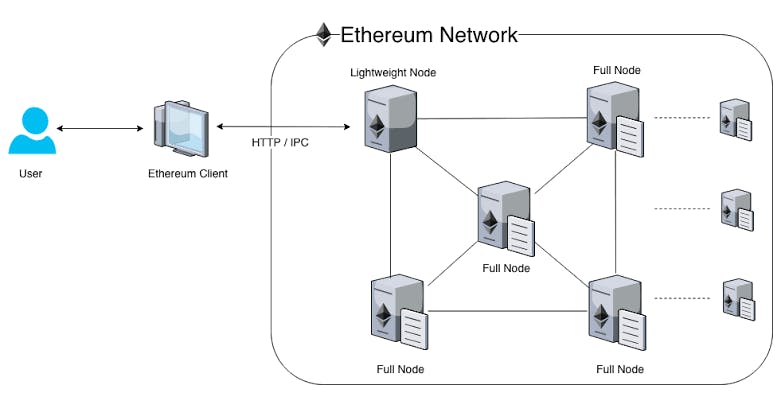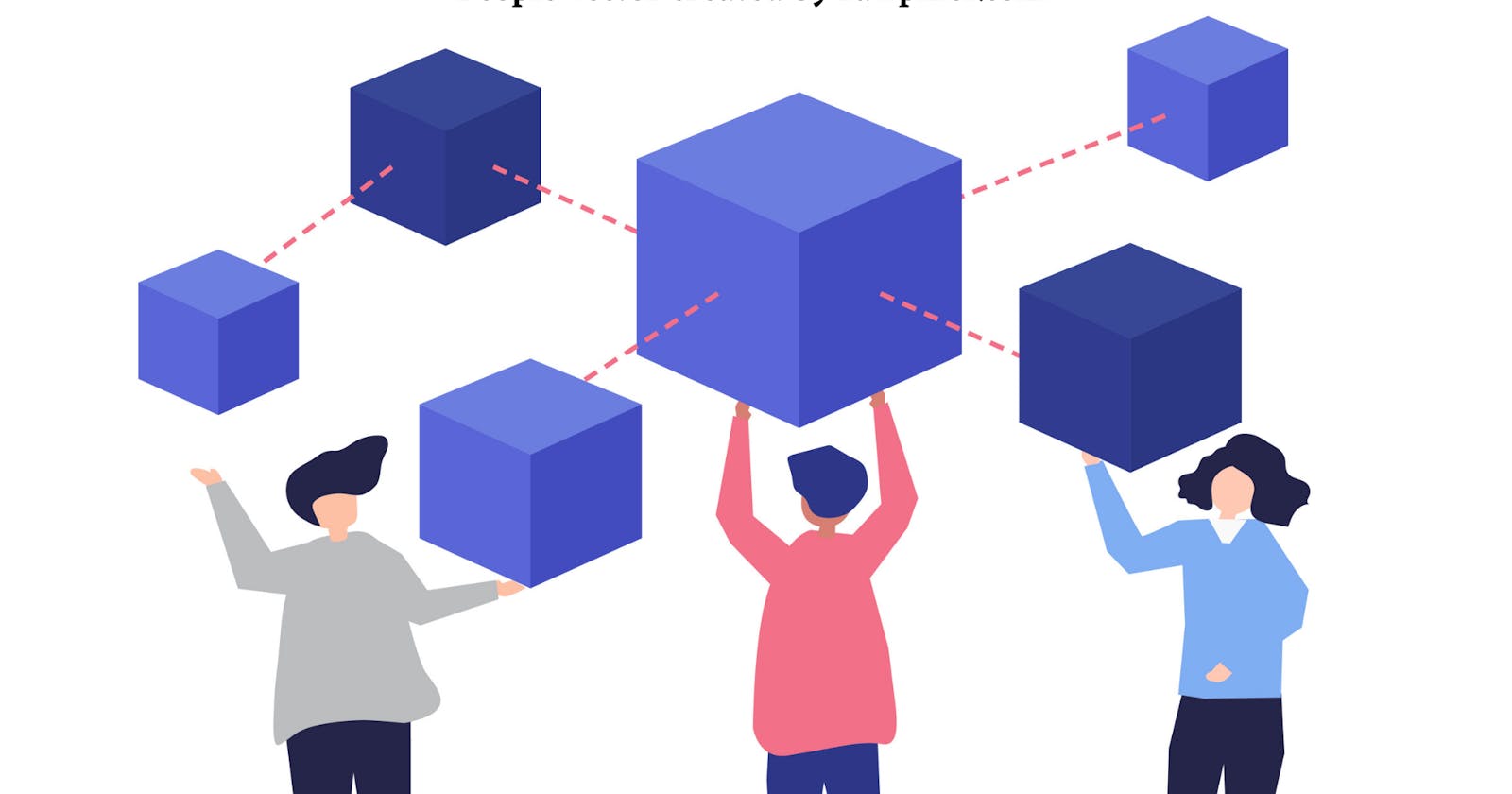The Ethereum network is one of the world's largest and most extensively utilized blockchain networks. It is also one of the world's largest open-source projects, with go-ethereum being one of Github's most popular projects since its initial release in 2015.
The Ethereum platform supports ether as well as a network of decentralized apps or dApps. In addition, the Ethereum network's smart contracts, which developed on the platform, are a critical component of running the platform.
Smart contracts enable participants to transact without needing a trusted central authority. Transaction records are immutable, verifiable, and securely distributed over the network, providing participants with complete ownership and visibility into transaction data.
This article will briefly explain Ethereum's Virtual Machine and the latest development around EVM chains.
What is the Ethereum Virtual Machine (EVM)?
The EVM (Ethereum Virtual Machine) is the central component of the Ethereum Blockchain that executes the code for all its decentralized applications.
The Ethereum Virtual Machine (EVM) is responsible for setting the rules for computing a new valid state from one block to the next. The EVM is a strong, sandboxed virtual stack integrated into each Ethereum node and is in charge of contract bytecode execution. Contracts are commonly written in high-level languages like Solidity before being compiled to EVM bytecode.
As a result, the EVM functions as a big decentralized or master computer that performs various tasks on the blockchain.
Ethereum Node

An Ethereum node is a computer that performs a certain function on the Ethereum network. For example, they could either validate, store or exchange data on the Ethereum network.
There are three types of nodes:
Full nodes
Light nodes
Archive nodes
Each of these nodes will translate the data given differently in the sense that the difference that exists between them is how quickly the node can retrieve data for your client to interpret.
Let us look at each type of ethereum node in detail:
Full nodes
A Full node is the most common type of Ethereum node. Full nodes store all blockchain data on disk and verify the network's rules, including responsibilities like block validation, receiving and confirming all transactions, and providing data to the network in general. However, Unfortunately, this type of node is costly and resource-intensive to run.
Light nodes
The amount of data stored by Ethereum light nodes are kept to a minimum. They simply keep the header chain data, such as the timestamp and previous block's hash. A light node will query the blockchain when further information is required. Light nodes are beneficial for devices with limited storage capacity, such as embedded devices or mobile phones, which cannot afford to keep several dozen Gigabytes of blockchain data.
Archive nodes
A full node having a massive amount of cached history data is known as an archival node. On the other hand, an archival node does not provide more validation or security than a full node. They basically store all the data and build an archive of the historical blockchain states. Archive nodes are generally not appealing to common users because they typically store large volumes of data.
What is an Ethereum client?
An Ethereum client is a software application that implements the Ethereum standard and connects with other Ethereum clients through a peer-to-peer network. A Client also verifies all transactions in each block, ensuring the network's security and accuracy.
The Ethereum clients on the nodes contribute to the protocol's single canonical state and, as a result, its security. Each Ethereum client comes with its own set of capabilities and advantages. Implementations can be tailored to different user groups due to their diversity. Consider features, programming language, support, and licenses when selecting a client. The two most common clients for running nodes are Geth and OpenEthereum.
Here are some example of open source Ethereum clients:
EVM Based Chains
There are more than 100s of EVM blockchains or Ethereum like networks supporting smart contract functionalities.
Ethereum
Ethereum is a decentralized computer that is essentially powered by nodes all over the world. Because each node must store and process data that passes via the Ethereum network, the quantity of data that can be handled at any given time is restricted.
Ethereum is based on blockchain technology, which means that it is operated by a decentralized network of nodes that collectively keep track of transactions. When someone submits a transaction to the network, the nodes verify it, and if there is consensus, the transaction is completed and recorded in a ledger. A transaction on the Ethereum network can also be the execution of a smart contract or dApp.
The fundamental benefit of Ethereum is that it is incredibly versatile, allowing it to be readily improved, altered, or modernized. The platform is multilingual and supports a variety of algorithms. Ethereum provides a decentralized ecosystem for developers to build awesome products using Solidity & the EVM. The Ethereum documentation is also pretty straightforward, should you want to build with Ethereum.
Binance Smart Chain (BNB)
Binance Smart Chain (BSC) is a blockchain that runs alongside Binance Chain, the company's main blockchain. BSC was launched in 2019 to support its vision for decentralized trading. It jointly launched the Binance Decentralized Exchange (DEX) with the blockchain, designed for high transaction output.
It is also interesting that BSC supports smart contracts, which are Ethereum-compatible. Developers can use this functionality to quickly build or move DApps, utilities, and other ecosystem components to the BSC network. The platform aims to make it easier for developers to create decentralized applications (DApps) and for consumers to manage their digital assets across several blockchains with low latency and high capacity.
Binance Smart Chain is a fork of the Go Ethereum (Geth) client; however, it differs from Ethereum in a few ways. For starters, rather than Ethereum's present Proof of Work consensus process, they chose a Proof of Staked Authority (PoSA) consensus mechanism (PoW). You can check out the developers guide If you wish to use xDAI in your next project.
Polygon chain (MATIC)
Polygon, which was previously known as Matic Network, is a framework for building interconnected blockchain networks.
The Polygon platform connects Ethereum-based projects by utilizing the Ethereum network. Using the Polygon platform can boost a blockchain project's flexibility, scalability, and sovereignty while still providing the security, interoperability, and structural benefits of the Ethereum blockchain.
Polygon's architecture is best described as a four-layer system consisting of the Ethereum layer, the security layer, the Polygon networks layer, and the execution layer.
The Polygon networks layer, which is the ecosystem of Polygon-based blockchain networks Each of them has its community and is in charge of achieving local consensus and generating blocks.
The Execution layer is Polygon's Ethereum Virtual Machine (EVM) implementation for smart contract execution.
The Ethereum layer is essentially a collection of smart contracts built on Ethereum. These smart contracts handle transactions, staking, and communication between Ethereum and the numerous Polygon chains.
The security layer runs alongside Ethereum and provides a "validators as a service" role, allowing chains to benefit from an extra layer of security.
Here's the developer's guide designed to help you build with Polygon, it also covers major concepts on Polygon.
Optimism
Optimism is a rollup scaling method for the Ethereum network that allows users to submit transactions and have them performed quickly at a cheaper gas cost. The smart contract on Optimistic Ethereum basically has only two tasks: to validate deposit/withdrawals and check proofs of transactions on the blockchain.
Thousands of nodes on L1 Ethereum run your transaction to ensure that the proposed block that includes it is genuine. This process is costly, and unlike on L1 Ethereum, Optimism provides faster and cheaper transactions because it allows users to perform most of their tasks off-chain in a "layer 2" protocol.
Over the last few months, Ethereum's scaling issues have been a major topic of discussion, and it has also been a target for other blockchains like Optimism. If you wish to use Optimism in your next project, you can check out the developers guide.
xDai chain (STAKE)
xDai Crypto is a cryptocurrency that is considered a stable coin. Stable coins are directly pegged to physical forms of currency, such as the US dollar, or precious metals rates, such as gold and silver. The xDai Crypto was created as a lightning-fast transaction system with much lower transaction fees.
For transaction confirmation, the xDai chain uses a Proof-of-Stake ('PoS') process, which is newer than the traditional Proof-of-Work ('PoW') technique. Ethereum, for example, is in the process of switching from PoW to PoS.
Transactions on the xDai chain are equally swift and cheap. A transaction on the xDai chain costs a few dollars compared to higher costs on the Ethereum chain. You can check out the developers guide If you wish to use xDAI in your next project.
Conclusion
The EVM (Ethereum Virtual Machine) can execute code of varying complexity and we have seen the development of Layer 2 solutions because of the limitation on Ethereum. As a result, Ethereum layer 2 scaling solutions are important tools for tackling network performance issues. Furthermore, Ethereum's ability to strengthen the DeFi (Decentralized Finance) field suggests that the Ethereum network might see a large increase in the number of apps and users.
I hope you enjoyed this article and you learned something new.
I would like to connect with you on Twitter and Linkedln.
Thanks for reading!
